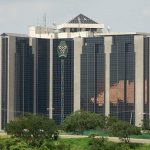FX gap between BDC and Official Falls to 12.0% from 61% in one year
By Patience Ikpeme
The Central Bank has expressed confidence in its recent reforms to stabilize the FX market.
As a result of the reforms, there has been a massive reduction in the the premium between the official rate and that of the Bureau De Change (BDC) from 61.93% in January 2023 to 12.0% by the end of January 2024.
In a statement from the apex bank, Deputy Governor, Economic Policy Mr. Muhammad Abdullahi, stated that the narrowing between the official and unofficial markets validated the impact of the policy actions by the bank “despite hedging and speculative activities of the FX market”.
Mr. Muhammad Abdullahi made this revelation while declaring open the 2023 Economic Policy Directorate Retreat of the Bank with the theme “Foreign Exchange Market Reforms and Price Stability in Nigeria” which held on Wednesday in Abuja.
Mr. Muhammad noted that the reforms the bank has implemented, will stabilize the market and improve the value of the naira.
He also noted that some challenges reminded as inflationary pressures continue to pose substantial downside risks to domestic and international investment and the overall Macroeconomic policy objective of ensuring sustainable growth.
Mr. Muhammad Abdullahi speaking for the bank stated “We have a renewed focus on the core mandate of the Bank, which is to maintain price stability, while delivering interest and exchange rates that create a conducive environment for investment and economic growth.
“This is reinforced by our commitment to bringing inflation and exchange rates within our medium-term target using all policy and strategic tools at our disposal,” he noted.
Speaking earlier, the Director of the Research Department, Ms. Aderinola Shonekan, noted that the Bank had undertaken bold reforms to address some of the challenges and structural constraints the economy currently faces.
She said the retreat sought to generate valuable insights and actionable recommendations to guide monetary policy decisions under the new inflation-targeting framework.
Participants at the retreat were drawn from the Research, Monetary Policy, Trade and Exchange, Statistics, and Financial Markets Departments of the Bank, as well as strategic external stakeholders.




